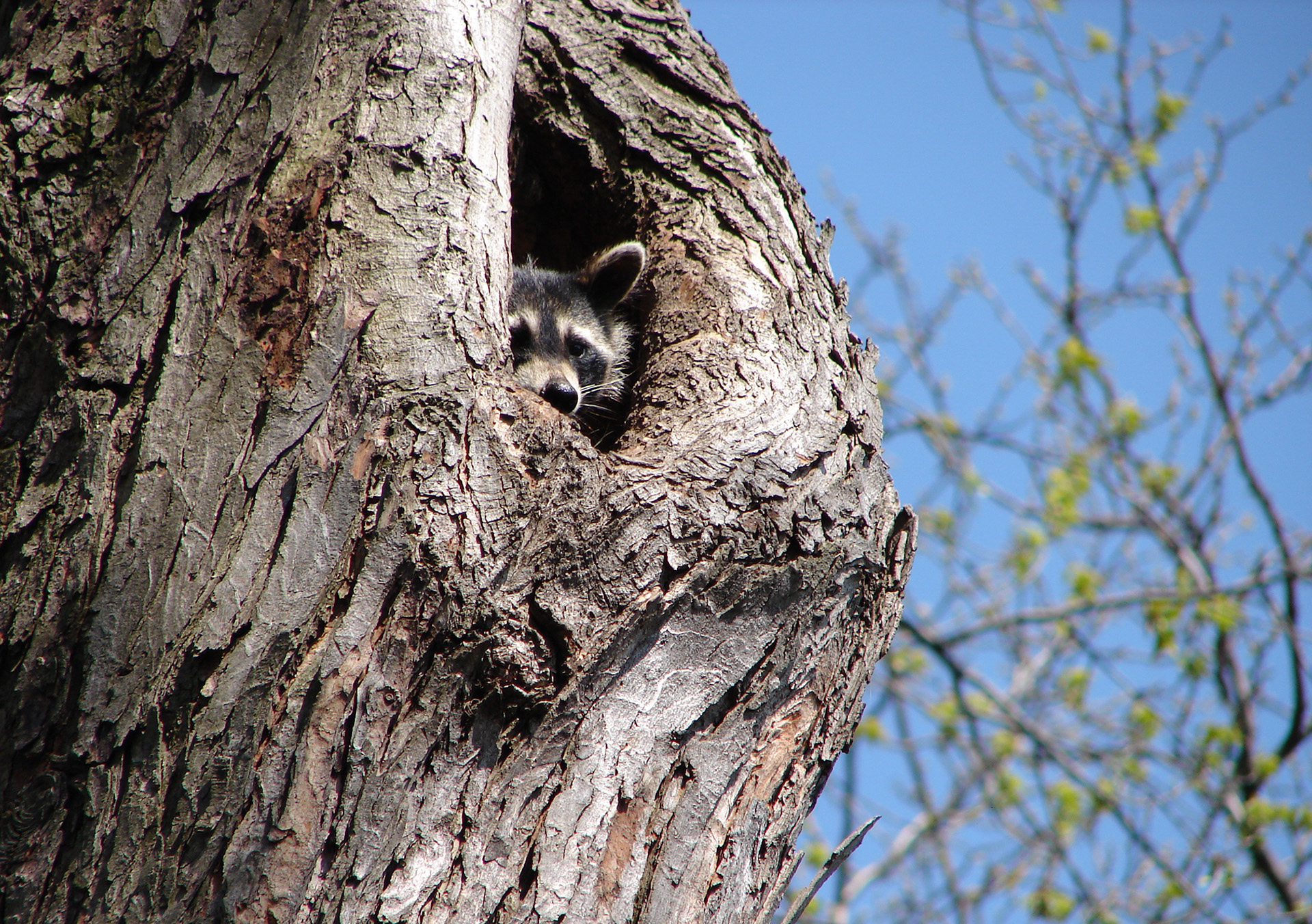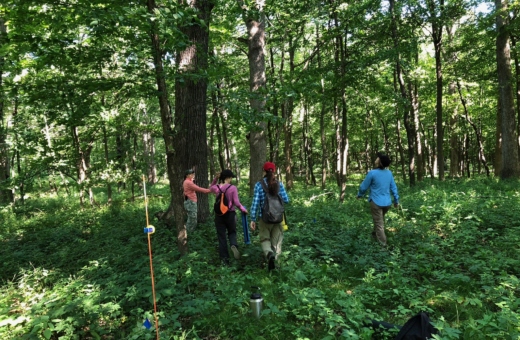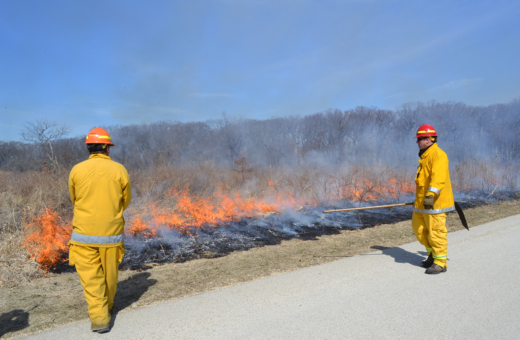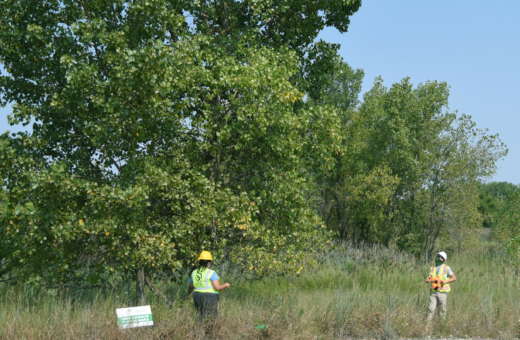Holes in trees are full of life
May 6, 2021
Look, up in that tree. Can you see that hole? Do you wonder what’s in there?
“Holes in trees are actually full of life,” says Emilian Geczi, manager of early childhood programs. “They provide shelter and warmth and security to all kinds of animals, just like our houses do for us.”
As you and your children stroll in the Arboretum’s collections and woods, look for holes in trees and think about what might live in them.
“Almost any hole you see in a tree provides a home to some animal at least
part of the year,” Geczi says.
A large hole, or hollow, at the base of a tree might shelter a raccoon or a fox. Holes higher up may house woodpeckers, owls, bats, or bluebirds. Wood ducks spend most of their time on water, but they nest in tree holes. Even the smallest holes can shelter insects, such as solitary kinds of bees. Holes form when trees are injured. A hole might start as a crack, or a branch might break off in a high wind. The break will expose fresh wood to bacteria and fungi that cause decay. Over the course of years, with the help of wood-chewing insects such as carpenter ants, the decay will gradually hollow out a space in the trunk.
Some birds, such as woodpeckers, sapsuckers, and tiny chickadees, carve their own holes. A woodpecker that finds a decaying soft spot in a tree will excavate a nesting hole with its bill. In future years, that same hole may be used by an owl, squirrel, or wren.
“Countless generations of animals might use one hole,” Geczi says. As a tree grows older, surviving years of storms, high winds, and harsh winters, it accumulates more holes. That’s one reason large, old trees are so valuable in the community of a forest or in your backyard: They have lots of holes that animals can use as hiding places and nests.
Big trees are worth protecting not just because they’re beautiful, but because they’re homes.



